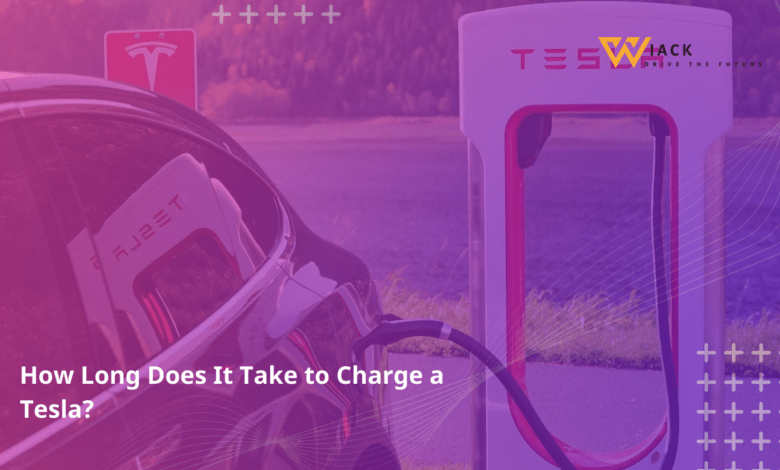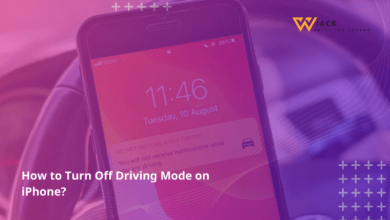How Long Does It Take to Charge a Tesla?

Did you know that Tesla owners spend an average of just 15-30 minutes at a Supercharger station during long trips? This surprising fact highlights the efficiency of Tesla’s charging technology and sets the stage for our deep dive into the world of Tesla charging times.
Introduction
In the rapidly evolving landscape of electric vehicles, Tesla stands out as a pioneer, revolutionizing not just the cars we drive, but how we “fuel” them. Understanding the intricacies of charging a Tesla is crucial for both current owners and potential buyers. Let’s embark on a journey to demystify the charging process and answer the burning question: How long does it take to charge a Tesla?
What is Tesla?
Tesla is more than just a car manufacturer; it’s a technology company at the forefront of sustainable energy solutions. Founded in 2003, Tesla has become synonymous with electric vehicles, pushing the boundaries of what’s possible in terms of range, performance, and charging capabilities. Their lineup includes the Model S, Model 3, Model X, and Model Y, each offering unique features while sharing Tesla’s core commitment to innovation and sustainability.
Why Tesla charging time matters
The time it takes to charge a Tesla is a critical factor for several reasons:
- Convenience: In our fast-paced world, time is a precious commodity. The ability to quickly charge your vehicle can significantly impact your daily routine and travel plans.
- Range anxiety: One of the biggest concerns for electric vehicle owners is the fear of running out of power. Understanding charging times helps alleviate this anxiety by allowing for better trip planning.
- Cost efficiency: Charging times can affect electricity costs, especially if you’re using time-of-use rates from your utility company.
- Battery health: The speed and frequency of charging can impact the long-term health of your Tesla’s battery, which is a significant component of the vehicle’s value.
- Environmental impact: Efficient charging contributes to the overall environmental benefits of driving an electric vehicle.
As we delve deeper into the world of Tesla charging, we’ll explore the various factors that influence charging times and provide you with practical insights to optimize your charging experience.
Charging Methods
Tesla offers multiple charging options to suit different needs and situations. Understanding these methods is crucial for maximizing the efficiency of your Tesla ownership experience. Let’s explore the three primary charging methods: Level 1, Level 2, and DC Fast Charging.
Level 1 Charging (120V Outlet)
Level 1 charging is the most basic and accessible method of charging your Tesla. It involves plugging your vehicle into a standard 120-volt household outlet using the Mobile Connector that comes with every Tesla.
Key features of Level 1 charging:
- Accessibility: You can charge virtually anywhere with a standard outlet.
- Low power output: Typically provides about 2-3 miles of range per hour of charging.
- Best for: Overnight charging at home when you don’t need a quick charge.
- Equipment needed: Tesla Mobile Connector (included with the vehicle).
While Level 1 charging is convenient, it’s also the slowest method. For a Tesla Model 3 Long Range with a 75 kWh battery, it could take up to 3-4 days to charge from empty to full using this method. However, it’s important to note that most Tesla owners don’t typically charge from 0% to 100% in a single session.
Level 2 Charging (240V Outlet)
Level 2 charging represents a significant step up in charging speed and is the most common method for home and public charging stations.
Key features of Level 2 charging:
- Higher power output: Provides about 10-30 miles of range per hour, depending on the amperage.
- Faster charging: Can fully charge a Tesla overnight or during a workday.
- Equipment options: Tesla Wall Connector or third-party J1772 chargers (with adapter).
- Installation required: Typically needs a 240V outlet or hardwired installation.
Level 2 charging is highly versatile. At home, a Tesla Wall Connector can add up to 44 miles of range per hour to a Model 3 Long Range. Public Level 2 chargers, while generally slower, still provide a significant boost compared to Level 1 charging.
DC Fast Charging (Superchargers)
DC Fast Charging, exemplified by Tesla’s Supercharger network, represents the pinnacle of charging speed currently available.
Key features of DC Fast Charging:
- Extremely fast: Can add up to 200 miles of range in just 15 minutes (V3 Superchargers).
- Strategically located: Positioned along major travel routes for convenient long-distance travel.
- Tesla-specific: Superchargers are designed specifically for Tesla vehicles.
- Dynamic power allocation: Charging speed adjusts based on battery level and other factors.
Superchargers are game-changers for long-distance travel in a Tesla. They allow for quick pit stops, similar to refueling a gas-powered car. However, it’s worth noting that frequent use of DC Fast Charging can potentially impact battery longevity, so it’s generally recommended for long trips rather than daily charging.
Understanding these charging methods provides a foundation for optimizing your Tesla charging experience. In the next section, we’ll explore the various factors that can affect charging times, helping you make informed decisions about when and how to charge your Tesla.
Factors Affecting Charging Time
The time it takes to charge a Tesla isn’t a fixed number. Several factors come into play, influencing the charging speed and efficiency. Understanding these factors can help you optimize your charging strategy and set realistic expectations for your charging sessions.
Battery Size
The size of your Tesla’s battery pack is a fundamental factor in determining charging time. Tesla offers various models with different battery capacities:
- Model 3 Standard Range Plus: 50-55 kWh
- Model 3 Long Range: 75-82 kWh
- Model S Long Range: 100-105 kWh
- Model X Long Range: 100-105 kWh
Naturally, a larger battery will take longer to charge fully. For instance, charging a Model 3 Standard Range Plus from 10% to 80% will be quicker than charging a Model S Long Range over the same percentage range.
Starting Battery Level
The current charge level of your Tesla’s battery when you begin charging significantly impacts the overall charging time. This is due to the charging curve of lithium-ion batteries:
- 0-20%: Charging is relatively quick.
- 20-80%: The fastest charging speeds are typically achieved in this range.
- 80-100%: Charging slows down considerably to protect battery health.
This is why Tesla and many EV experts recommend keeping your battery charge between 20% and 80% for daily use, only charging to 100% for long trips.
Ambient Temperature
Temperature plays a crucial role in battery performance and charging speed. Lithium-ion batteries have an optimal temperature range for charging, typically between 20°C to 25°C (68°F to 77°F).
- Cold weather: Can significantly slow down charging speeds as the battery needs to be warmed up.
- Hot weather: While less impactful than cold, extreme heat can also reduce charging efficiency.
Tesla vehicles have built-in battery thermal management systems to mitigate these effects, but ambient temperature remains an important factor to consider.
Charging Station Type
The type of charging station you’re using is perhaps the most significant factor in determining charging speed:
- Level 1 (120V): 2-3 miles of range per hour
- Level 2 (240V): 10-30 miles of range per hour
- Supercharger V2: Up to 150 kW, adding up to 150 miles in 30 minutes
- Supercharger V3: Up to 250 kW, adding up to 200 miles in 15 minutes
It’s important to note that not all Tesla models can accept the maximum charging rate of V3 Superchargers. The Model 3 and Model Y can accept up to 250 kW, while older Model S and Model X versions may be limited to lower rates.
Charging Speed
The actual charging speed can vary even within the same type of charging station. Factors influencing this include:
- Shared power: Some Supercharger stations share power between adjacent stalls. If the station is busy, your charging speed might be reduced.
- Battery temperature: Tesla’s battery management system may limit charging speed if the battery is too cold or too hot.
- State of charge: As mentioned earlier, charging speed typically slows down as the battery approaches full charge.
Understanding these factors can help you plan your charging sessions more effectively. For instance, if you’re planning a long trip, you might aim to arrive at a Supercharger with your battery at around 10-20% charge to take advantage of the fastest charging speeds. Or, if you’re charging at home overnight, you might set your charge limit to 80% to optimize battery health.
In the next section, we’ll provide specific charging time estimates for different Tesla models and charging methods, giving you a clearer picture of what to expect in various charging scenarios.
Charging Time Estimates
Now that we’ve explored the factors affecting charging times, let’s dive into some specific estimates for different Tesla models and charging methods. Keep in mind that these are approximate times and can vary based on the factors we discussed earlier.
Level 1 Charging
Level 1 charging, using a standard 120V household outlet, is the slowest charging method. Here are some estimates for different Tesla models:
| Tesla Model | Miles of Range Added per Hour | Time to Full Charge (from 20%) |
|---|---|---|
| Model 3 SR+ | 3-4 miles | 45-60 hours |
| Model 3 LR | 3-4 miles | 60-80 hours |
| Model S | 2-3 miles | 85-100 hours |
| Model X | 2-3 miles | 85-100 hours |
As you can see, Level 1 charging is not practical for fully charging your Tesla, especially if you have a larger battery model. However, it can be useful for topping up your battery overnight or in emergency situations.
Level 2 Charging
Level 2 charging, using a 240V outlet or a Wall Connector, provides much faster charging speeds. Here are some estimates:
| Tesla Model | Miles of Range Added per Hour (48A) | Time to Full Charge (from 20%) |
|---|---|---|
| Model 3 SR+ | 30-35 miles | 6-8 hours |
| Model 3 LR | 40-45 miles | 8-10 hours |
| Model S | 30-35 miles | 12-15 hours |
| Model X | 25-30 miles | 14-17 hours |
These estimates assume you’re using a Tesla Wall Connector or a high-amperage Level 2 charger. Lower amperage chargers will provide slower charging speeds.
DC Fast Charging
DC Fast Charging, or Supercharging, is the fastest way to charge your Tesla. Here are some estimates for V3 Superchargers:
| Tesla Model | Peak Charge Rate | 10-80% Charge Time |
|---|---|---|
| Model 3 SR+ | 170 kW | 25-30 minutes |
| Model 3 LR | 250 kW | 20-25 minutes |
| Model S | 250 kW | 30-35 minutes |
| Model X | 250 kW | 35-40 minutes |
It’s important to note that these are best-case scenarios. The actual charging speed can vary based on factors like battery temperature, state of charge, and how many other vehicles are charging at the same station.
Real-world Supercharging scenario:
Let’s say you’re on a road trip in your Model 3 Long Range. You arrive at a Supercharger with 10% battery remaining. Here’s what your charging session might look like:
- 0-5 minutes: The charging rate ramps up quickly, potentially reaching peak speeds of 250 kW.
- 5-15 minutes: You maintain high charging speeds, potentially adding 150-200 miles of range.
- 15-25 minutes: As your battery approaches 80%, the charging rate begins to taper off.
- 25-30 minutes: You reach 80% charge, adding about 250 miles of range in total.
At this point, you might choose to continue your journey, as charging beyond 80% happens at a much slower rate and is generally not time-efficient during road trips.
Understanding these charging time estimates can help you plan your trips and daily charging routine more effectively. In the next section, we’ll provide some tips on how to optimize your charging experience and reduce your overall charging time.
Tips for Faster Charging
Maximizing the efficiency of your Tesla charging sessions can save you time and ensure your vehicle is always ready when you need it. Here are some expert tips to help you charge your Tesla faster and more effectively.
Use Superchargers whenever possible
When you’re on a long trip or need a quick charge, Superchargers are your best friend. Here’s how to make the most of them:
- Plan your route: Use Tesla’s trip planner or a third-party app like A Better Route Planner to optimize your Supercharger stops.
- Arrive with a low battery: Superchargers work fastest when your battery is between 10% and 20%. Try to time your arrival accordingly.
- Don’t overcharge: Charging slows down significantly after 80%. Unless you absolutely need the extra range, it’s more time-efficient to stop charging at 80% and make an additional stop if necessary.
- Choose your stall wisely: At V2 Superchargers, stalls are often paired (1A/1B, 2A/2B, etc.). If possible, choose a stall without an active neighbor to potentially get faster charging speeds.
- Use V3 Superchargers when available: These newer chargers can provide faster charging speeds and don’t share power between stalls.
Precondition the battery
Preconditioning your Tesla’s battery can significantly reduce your charging time, especially when Supercharging:
- Use the navigation system: When you set a Supercharger as your destination, your Tesla will automatically start preconditioning the battery.
- Start early: Begin your preconditioning process about 20-30 minutes before you reach the Supercharger for optimal results.
- Maintain speed: Try to maintain a steady speed as you approach the Supercharger to keep the battery at its ideal temperature.
- Consider climate: In very cold weather, you might need to start preconditioning even earlier to ensure the battery is warm enough for fast charging.
Plan your charging stops
Strategic planning can help you minimize your overall charging time:
- Multiple shorter stops: Instead of one long charging session, consider making multiple shorter stops. This allows you to take advantage of the faster charging speeds at lower battery levels.
- Combine charging with other activities: Plan your Supercharger stops around meal times or other necessary breaks to make the most of your charging time.
- Overnight charging: When possible, use Level 2 charging overnight at hotels or other accommodations. This can reduce the number of Supercharger stops you need to make during the day.
- Use destination chargers: Many hotels, restaurants, and other venues offer Tesla destination chargers. These Level 2 chargers can be a great way to top up your battery while you’re parked for other activities.
Additional tips for efficient charging
- Keep your battery between 20% and 80%: This range is optimal for battery health and allows for the fastest charging speeds.
- Update your Tesla regularly: Software updates can improve charging efficiency and battery management.
- Monitor tire pressure: Proper tire inflation can improve your vehicle’s efficiency, reducing the frequency of charging stops.
- Use climate control wisely: Excessive use of heating and air conditioning can drain your battery faster. Consider using seat heaters instead of cabin heat when possible, as they’re more energy-efficient.
- Avoid extreme temperatures: If possible, park in a garage or shaded area to keep your battery at a more optimal temperature.
By implementing these tips, you can significantly reduce your charging times and enhance your overall Tesla ownership experience. Remember, the key to efficient charging is planning ahead and understanding your vehicle’s needs. With practice, you’ll develop a charging routine that fits seamlessly into your lifestyle.
Conclusion
As we wrap up our comprehensive guide on how long it takes to charge a Tesla, let’s recap the key points and look towards the future of Tesla charging technology.
Summary of charging times
The time it takes to charge a Tesla can vary widely depending on the charging method:
- Level 1 (120V): 2-4 miles of range per hour
- Level 2 (240V): 25-45 miles of range per hour
- Supercharger (DC Fast Charging): Up to 200 miles in 15 minutes (V3 Superchargers)
Remember, these are approximate figures and can vary based on factors like battery size, starting charge level, ambient temperature, and specific vehicle model.
Advantages of Tesla charging
Tesla’s approach to charging offers several unique advantages:
- Extensive Supercharger network: Tesla’s proprietary Supercharger network provides fast, convenient charging for long-distance travel.
- Integrated trip planning: Tesla’s navigation system seamlessly integrates charging stops into your route, making long trips easier to plan and execute.
- Regular updates: Tesla frequently updates its vehicles’ software, often improving charging efficiency and battery management.
- Home charging solutions: The Tesla Wall Connector offers a seamless and efficient home charging experience.
- Battery longevity: Tesla’s advanced battery management system helps maintain battery health over time, even with regular fast charging.
Future of Tesla charging technology
Tesla continues to innovate in the field of electric vehicle charging. Here are some developments we might see in the near future:
- Faster charging speeds: Tesla is constantly working on improving charging speeds. We may see even faster Superchargers in the coming years.
- Expanded Supercharger network: Tesla plans to significantly expand its Supercharger network, making long-distance EV travel even more accessible.
- Vehicle-to-grid technology: Future Teslas might be able to feed energy back into the grid, potentially earning owners money and supporting grid stability.
- Wireless charging: While still in development, wireless charging could revolutionize how we charge our vehicles, making the process even more convenient.
- Improved battery technology: Advancements in battery technology could lead to faster charging times and increased range.
In conclusion, while the question “How long does it take to charge a Tesla?” doesn’t have a simple, one-size-fits-all answer, understanding the factors that influence charging time can help you optimize your charging strategy. Whether you’re charging at home overnight, topping up at a destination charger, or making a quick Supercharger stop on a road trip, Tesla’s charging ecosystem offers flexibility and convenience.
As battery and charging technologies continue to evolve, we can expect even faster charging times and more seamless integration of charging into our daily lives. The future of electric vehicle charging is bright, and Tesla is at the forefront of this exciting technological frontier.
Remember, the key to a great Tesla ownership experience is to plan ahead, understand your vehicle’s capabilities, and take advantage of the diverse charging options available to you. With a little practice and planning, you’ll find that keeping your Tesla charged becomes second nature, allowing you to enjoy all the benefits of electric vehicle ownership without the worry of range anxiety.
Happy charging, and enjoy the journey in your Tesla!
Get the latest car news, reviews, and prices at Wiack.com. Your one-stop destination for all things automotive.





